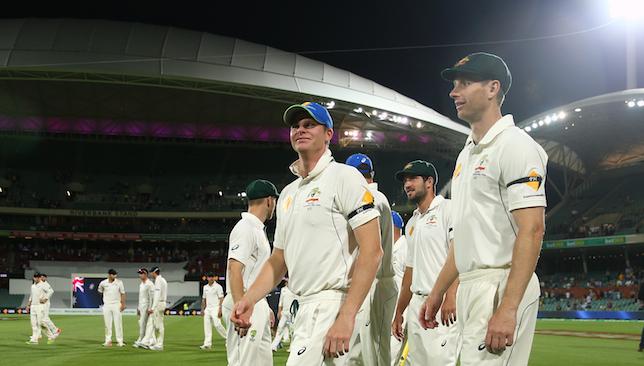
The first day/night Test had it all. A pink ball, play under lights and even a dinner break. The Adelaide Test lasted three days and was packed to the brim with wickets and drama and made for a sensational debut.
– Tweets of the week: Day/night Test delights
There were only a few certainties going into the match. Players, especially the batsmen, were expected to face some trouble when the lights were switched on and the match moved from natural to artificial light. Secondly, the pink ball was known to swing a lot under lights. Apart from that, not many knew what to expect. The Kiwis got to bat first and were bundled out for 202 with fine bowling from the Aussie seamers. However, all expectations of Aussie domination were quickly quashed as they were themselves bowled out for 224.
It could have been a smaller total if Nathan Lyon had been given out when on nought but the Decision Review System somehow saved him and Australia’s hopes.
The procession continued as the visitors were dismissed for 208 with Josh Hazlewood almost unplayable, picking up six wickets. That gave Australia a victory target of 187 which they achieved with a lot of difficulty.
There was high drama in the Nagpur Test between India and South Africa, which lasted three days, as well. But the Adelaide match had a whole different feel to it.
Sitting with Julia Gillard and watching the pink ball swing. Wickets tumbling. Fine S. Australian wine slipping down. It’s all just lovely.
— Stephen Fry (@stephenfry) November 28, 2015
The pink ball under lights is without doubt the star of the show. It behaves differently during the day compared to the evenings. Bowlers can get a lot of purchase out of it. And most importantly, it looks exciting on TV.
Crowd attendance in Adelaide was one of the highest ever recorder – more than 44,000 – at the venue but getting fans to the grounds has never been a real problem in Australia or England. It’s the rest of the world which has been struggling and needs to take note of what has happened Down Under.
The match began at 14:00 local time and went well into the evening. That meant not only could fans go to the stadium after work and watch a sizeable portion of the game, people could also catch live action on TV after the day’s work.
Earlier, hardly anyone with a regular job could think of watching a Test live or on TV during a working day. But now they have a genuine option. Especially if the match is as exciting as the one in Adelaide.
Day/night Tests provide a huge opportunity for organisers to fill venues for Test matches, including here in the UAE. With a massive expat population which simply cannot turn up to the venues during the day, the UAE looks like the perfect place to try out more day/ night Tests in the future and see if fans do turn up at non-traditional venues.
There are some who feel players and purists are being inconvenienced greatly as it distorts a product that has remained unchanged for more than a century. But times are changing and Test cricket needs to either reinvent itself or at least offer something refreshing.
If making rule changes like a cap on the number of overs bowled per innings or restricting Tests to four days seem excessive, the least that can be done is package the game better.
And in day/night Tests, cricket has a unique item. The fans seem to like it and it is undoubtedly a grand show. It’s up to the players and administrators to make sure they adjust because this looks like one of the ways forward.